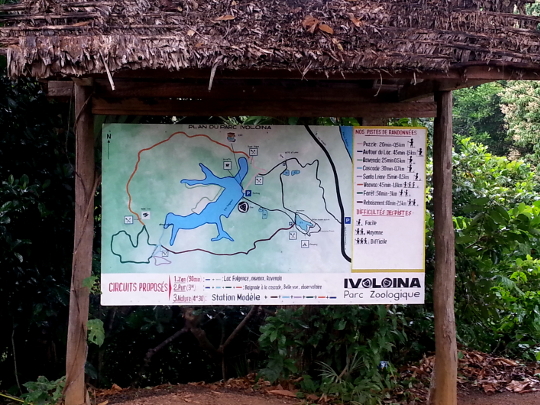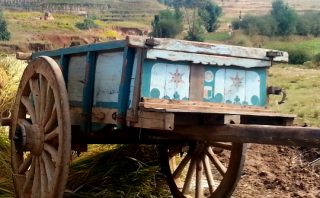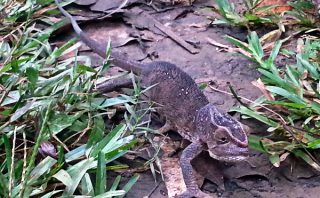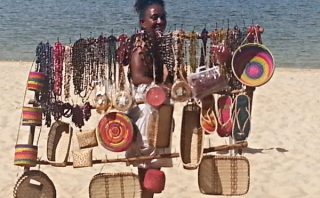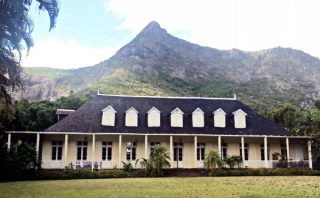Madagscar. Lemurs. Madagascar. Lemurs. Right?
When telling friends and family we were moving to Madagascar, most didn’t know much about the country. Some didn’t even know where it was. But pretty much all knew about lemurs from the Dreamworks film, Madagascar. I even tell people they made us sing the lemur song to get into the country. You know, I Like To Move It. But after living here a month, we still hadn’t seen a single lemur.
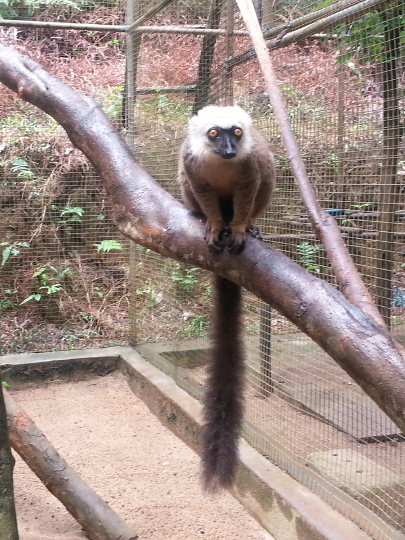
We’re told that Parc Zoologique d’Ivoloina is a good place to see lemurs. We drive out on a Saturday morning. The park is about 11 km (6.8 miles) from town. The drive takes about 30 minutes. Thus are Malagassy roads.
We pay the entrance fee (12,000 ariary per adult, about $4.00) and arrange for a guide. Giara, our guide, leads us out in the rain. He prefers to walk without an umbrella. It’s raining pretty hard. Our umbrellas go up.
Giara stops often to talk about the plants in the park. He tells us about ravenala, the Madagascar or traveler’s palm, and many others. Ravenala is important to the Malagasy because all parts of it are used in building traditional homes. Fronds for the roof, branches in the wall, trunks for the frame and floor. He also shows us how you can poke the branches with a knife and get water from it. I drink some. Herbal, of course.
Then we get to the lemurs in the zoo area. They are sheltering from the rain at first, but once the rain stops they all come out. Giara tells us about each species, where they come from in Madagascar, how many are left in the wild, and the conservation work in support of them at Ivoloina. We see blue-eyed black lemurs, crown lemurs, black-and-white ruffed lemurs, gentle grey lemurs, white fronted brown lemurs, and greater bamboo lemurs.
And we check out radiated tortoises, a chameleon, a tree boa, and a red frog.
On the way back to the car, we first hear and then see black-and-white ruffed lemurs in the trees. Giara tells us lemurs have three screams, “They scream for love, they scream for danger, and they scream for communication.” Raucous.
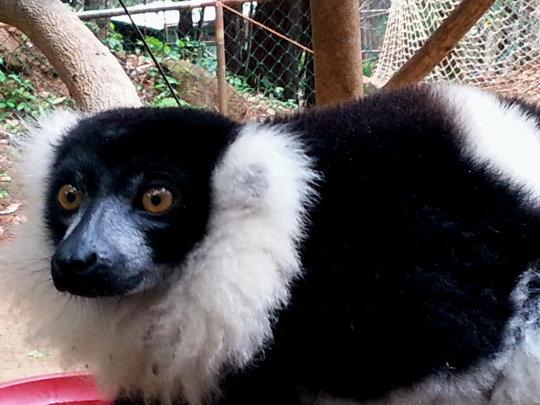

About Ivoloina
A number of travel websites mentioned Duke University’s involvement at Ivoloina. I was curious so looked it up.
Ivolina Zoological Park is both a zoological exhibit and natural habitat reserve situated on 282 hectares (697 acres). In addition to the exhibits and resident, free-ranging lemurs, the park offers day hikes, camping, dugout canoe tours, and an environmetal education center.
The Ivoloina site was first developed as a manioc flour factory in the 1850s. In 1898, the site became an experimental botanical garden known as Ivoloina Station. Over the years, Ivoloina was abandoned, a forestry station, a prison, and a zoo. The zoo located within the Forestry Station was destroyed by a cyclone in 1986.
In 1987, representatives of the government of Madagascar and of American and European zoos, universities, botanical gardens, and related institutions attended a conference to develop strategies for the long term survival of the Malagasy lemurs. Duke University, home of the Duke Lemur Center, attended. Out of this, the Madagascar Fauna Group (MFG) was organized in 1988 and began operating the Ivoloina Zoological Park, which reopened in 1990. The Duke Lemur Center continues to coordinate its conservation work in Madagascar through its partnership with the MFG and also led the development of the Ivoloina Conservation Training Center.
